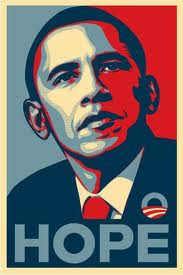Anyone who looked at photographs of the aftermath of Hurricane Katrina back in 2005 had to be thinking the same thing: How can New Orleans ever recover? News stations were flooded with pictures and videos of families stranded on their roofs, citizens using kayaks for transportation, and what seemed like half the city calling the Superdome their new home. Even after the media had moved on to new stories, New Orleans still remained devastated—physically and emotionally—for many years. It was not until February 7th, 2010 that the suffering of the city finally ended. With the Saints Super Bowl XLIV victory, a turning point for New Orleans began, and this iconic image was born.
The photo is of the Saints’ quarterback Drew Brees holding his child during the postgame celebration. One reason the photo has become so iconic to Americans—especially those who live in New Orleans—is that it is an extremely relatable image. There are thousands of photographs of the Saints celebrating after the Super Bowl, but this is the image that became iconic and ran in many periodicals and magazines. Why? Because many the other photos were of Saints players celebrating with the Lombardi trophy. Many Americans can envision themselves being held by their father or holding their own son much better than they can imagine holding the Lombardi trophy. We immediately key in on the popular iconography of a father holding his son and connect with it. This aesthetic familiarity is heightened by the fact that Brees’ face isn’t showing, allowing us to superimpose ourselves into the image and create in us a more powerful emotional response.
The powerful emotions that this photo can evoke are another reason it is iconic. The Super Bowl victory was a cathartic moment for New Orleans and this is readily apparent in the image. The confetti falling and word “Champions” in the background inspire the thoughts of festivity and merriment. At the same time, the Saints attire is obvious in the picture, bringing to mind New Orleans—now synonymous with Hurricane Katrina—and therefore inevitably the afore mentioned images of citizens stranded on their roofs and other scenes of devastation. These two codes of jubilation and devastation clash, bringing even more intrigue to the photo. Another transcription able to be made from the photo comes from the child. The pose of Brees and his child immediately brings to mind the opening (and closing) scene of the Lion King and the idea of the circle of life. This idea is emblematic of the fall and rise New Orleans has experienced over the past five years. Symbolically, the child can even been seen as a representation of rebirth for the city of New Orleans, as it is now ready to make a fresh start.
This image may not be the most preeminent image of American culture; however, it definitely is iconic in the minds of New Oleanders and sports fans alike. Its aesthetic familiarity makes it a great image to view; however, it is the semiotic transcriptions that can be taken from it and the emotions those symbols evoke that make this photograph truly iconic.
--Zach Kadow
.jpg)












